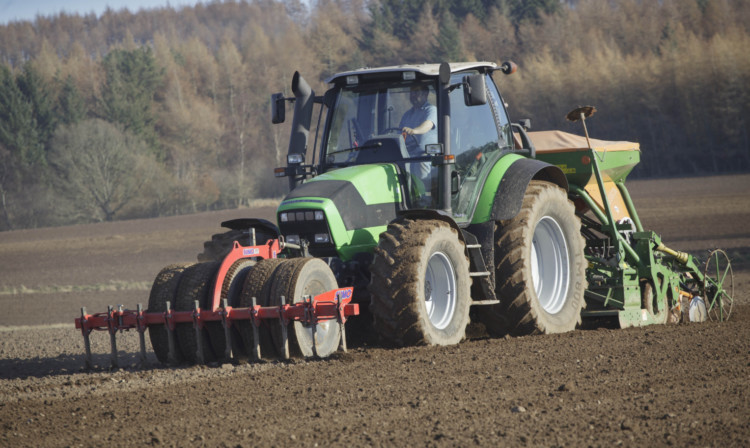A leading agricultural business analyst has voiced a “big concern” about the pace of CAP reform implementation in Scotland.
Richard King of Andersons Consultants, addressing a seminar at Perth Racecourse, said: “Scottish Government has spent too long listening to people and been too concerned about pleasing interest groups.
“There is a need now to ‘man up’ and simply get on with it.”
Mr King’s concerns had been heightened by last week’s news that Scotland’s Rural Affairs Secretary Richard Lochhead has extended the CAP direct payments consultation by two weeks without really indicating why extra time was needed.
Farmers and their advisers were already desperate to know how the new regime would be implemented.
Mr King and his colleague Graham Redman spent yesterday morning looking at the prospects for UK agriculture. They were, they argued, reasonably good but only if the farming industry raised its productivity.
A recovery in profitability this year was likely, although much depended on the pound-to-euro exchange rate.
Mr Redman pointed to UK agriculture’s “incredibly strong” balance sheet. “I know of no other industry with such a strong balance sheet. I would be interested to know if there is one. There has been a phenomenal change in land values, so that for many they have made more profit from land than from farming,” he said.
Supply of land remained very limited and demand very strong, but Mr Redman suggested the pace of change could slow as base rates rise and other investment opportunities begin to look attractive.
Inheritance tax (IHT) relief for working farmers might be removed, but which administration would make the move?
There was an undoubted “Dyson effect” driving up land prices. Vacuum cleaner tycoon and serial inventor James Dyson had bought many thousands of acres of land in Lincolnshire, presumably as a tax shelter, and this had driven up land prices.
Even when a neighbouring farmer did manage to outbid someone seeking IHT relief the price was artificially inflated.
“The Dyson effect is well enough understood and on the whole IHT relief is a generous tax measure. But if it was lifted it would apparently bring in a relatively small amount to the Treasury, but it may still be dismantled at some stage,“ said Mr Redman.
The situation was of course different where land was rented.
Anderson’s Loam Farm is a fictional 1,500-acre farm with 600 acres owned and the balance rented. Its profitability last year and this was predicted to be considerably impacted by recent increases in rents.
Loam Farm modelling also showed big differences in profitability depending on how well it was managed. A good manager making best use of inputs and producing a 10.4 tonne per ha (t/ha) wheat crop had a cost of production per tonne of just above £110. A poorer manager could use as many, or more, inputs to achieve a 7.7 t/ha yield, taking cost of production to £175 per tonne.
“The problem is the gap between the best and the worst is growing.
“The current ex-farm wheat price is somewhere between these two costs of production indicating that the higher performing arable operator might achieve a profit from farming while the lower performer will be losing money before Single Farm Payment,” Mr Redman said.
